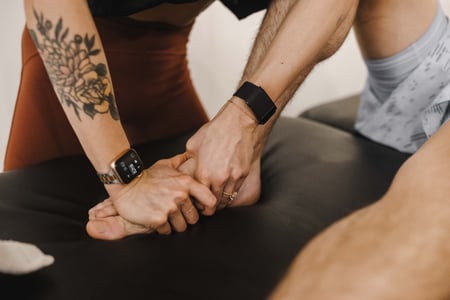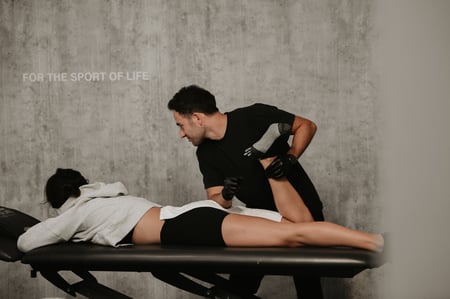From Stress to Fracture: Bone Injuries in Runners
March 14, 2024
Bone stress injuries (BSIs), also known as stress fractures, are one of the most common overuse injuries in runners. Studies show BSIs account for up to 20% of all injuries sustained by runners. Understanding what BSIs are, their symptoms, risk factors, and treatment is important for any runner to stay healthy and avoid long layoffs from the sport they love.

What is a Bone Stress Injury?
BSIs result from repetitive force being applied to bone, causing fatigue. This begins as a stress reaction and if training continues without allowing the bone time to repair and strengthen, it can progress to a stress fracture. Common locations for BSIs in runners include the metatarsals of the foot, navicular bone, heel, tibia (shin), and femoral neck of the hip.
Risk Factors include:
- Sudden increase in training volume or intensity
- High weekly running mileage (exceeding 30 miles per week)
- Decreased calf girth or lean body mass
- Low bone mineral density
- Irregular or absent menstrual cycles in female runners
- Dietary deficiencies (low calcium and vitamin D intake)
- Hard training surfaces and worn out shoes
Symptoms of Bone Stress Injuries and When to Seek Help
Early symptoms of a BSI include an aching pain at the site that is worse with weight-bearing activity and improves with rest. As the injury progresses, the pain becomes more frequent, occurring earlier in runs and lasting longer after. Eventually the pain may be constant.

Early diagnosis is key to recovery. Runners should have a low threshold to back off training and seek evaluation from a sports medicine professional if pain persists beyond a few runs. Prompt treatment can prevent the injury from developing into a full fracture that will require lengthy healing. Trying to "run through the pain" will only make it worse.
Examples that warrant immediate medical attention include:
- Pain that progressively worsens or does not improve after 1-2 weeks of rest
- Pain directly over a bone that is tender to touch
- Visible swelling or bruising over the painful area
- Pain that causes an alteration in running form or a limp
Diagnosis of Bone Stress Injuries
If you suspect a BSI, your first step should be to see a physical therapist who specializes in treating runners. Physical therapists are trained to perform a comprehensive evaluation to assess and diagnose bone stress injuries. They will ask detailed questions about your training, symptoms, and medical history. Then, they will perform specific tests and movements to reproduce your pain and determine the likely source.

Physical therapists are experts in the musculoskeletal system and can often diagnose a BSI based on the history and physical exam alone. If the physical therapist suspects a BSI, they will recommend temporarily stopping running and provide specific guidelines for cross-training activities to maintain fitness while allowing the bone to heal.
In some cases, the physical therapist may recommend imaging to confirm the diagnosis or grade the severity of the BSI. However, a thorough physical therapy assessment can help prevent unnecessary imaging and streamline the return to running by ensuring that imaging is used judiciously and only when warranted.
If imaging is deemed necessary, the physical therapist will refer you to a sports medicine physician who can order the appropriate type of imaging (X-ray, MRI, or bone scan) and interpret the results. The physician and physical therapist will then work together to develop an individualized treatment plan based on the specific type and location of the BSI.
Treatment for Bone Stress Injuries
Treatment typically involves a period of relative rest to allow the bone to heal. For low-risk BSIs, this may involve a few weeks of cross-training with non-impact activities like swimming, biking, or elliptical before gradually returning to running. For high-risk BSIs, a longer period of complete rest and non-weightbearing may be required.

The physical therapist will guide you through the rehabilitation process, helping you maintain fitness and build strength while the bone heals. They will also perform periodic reassessments and functional tests to determine when you are ready to start running again and provide guidance on safely progressing your training to minimize the risk of re-injury.
Throughout the rehab process, the body lays down new bone to repair the damaged area. This new bone is initially weak and requires adequate rest and nourishment to remodel and regain strength. Prioritizing sleep, managing stress, and consuming a nutrient-rich diet with sufficient calories, calcium, vitamin D, and protein will help optimize bone health and facilitate healing.
It's crucial for runners to be patient and avoid rushing the recovery process. Returning to running too quickly, before the bone has fully healed, significantly increases the risk of worsening the injury or developing a chronic, non-healing fracture. Trust your physical therapist's guidance and resist the temptation to push too hard, too soon.

